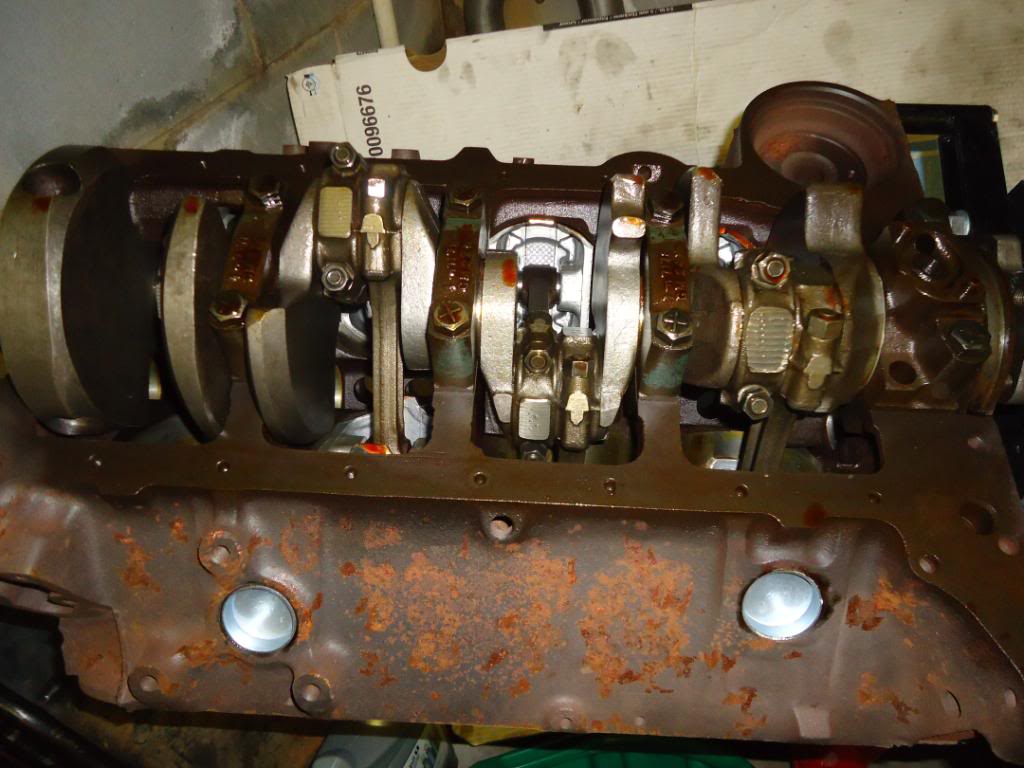
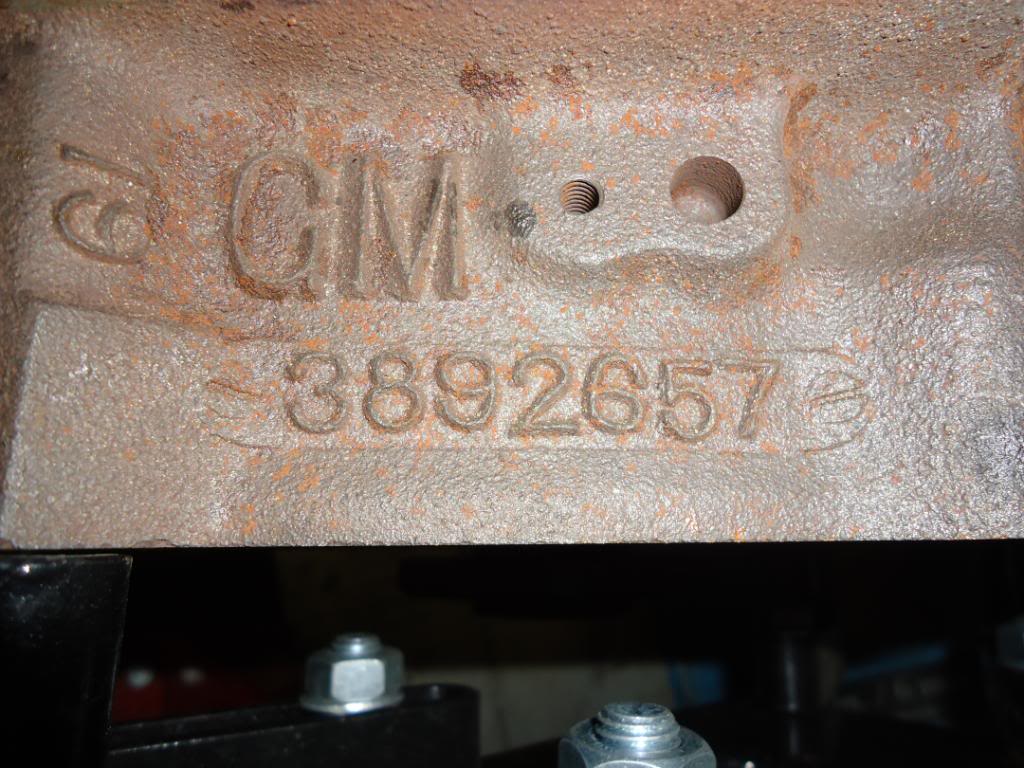
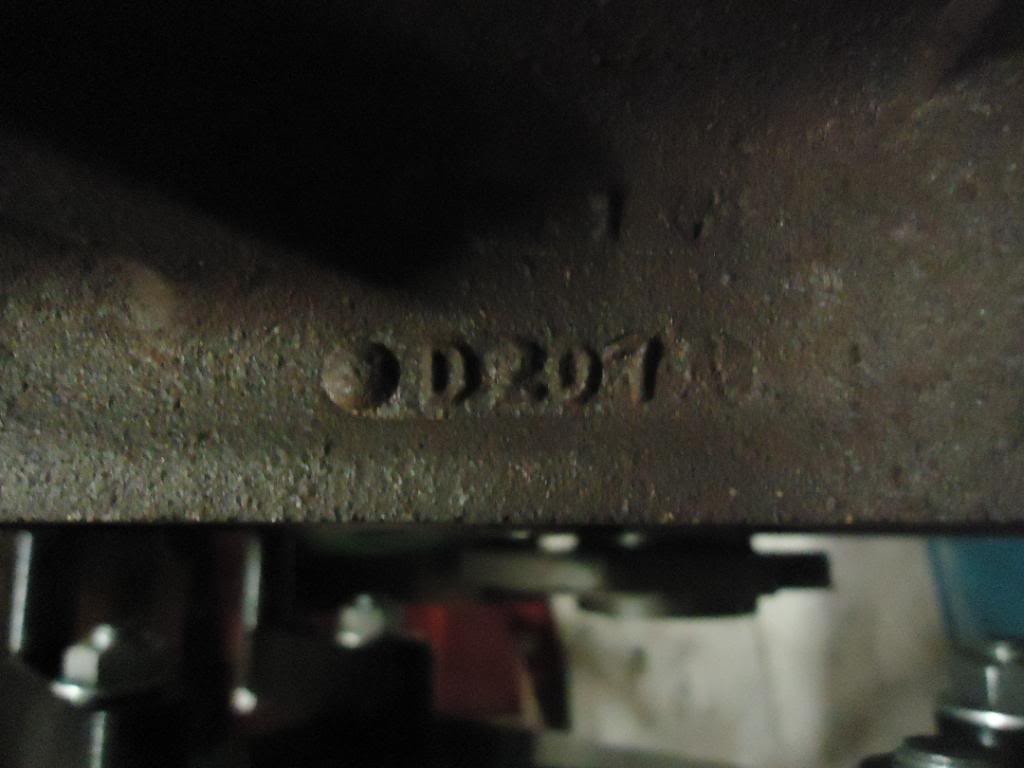
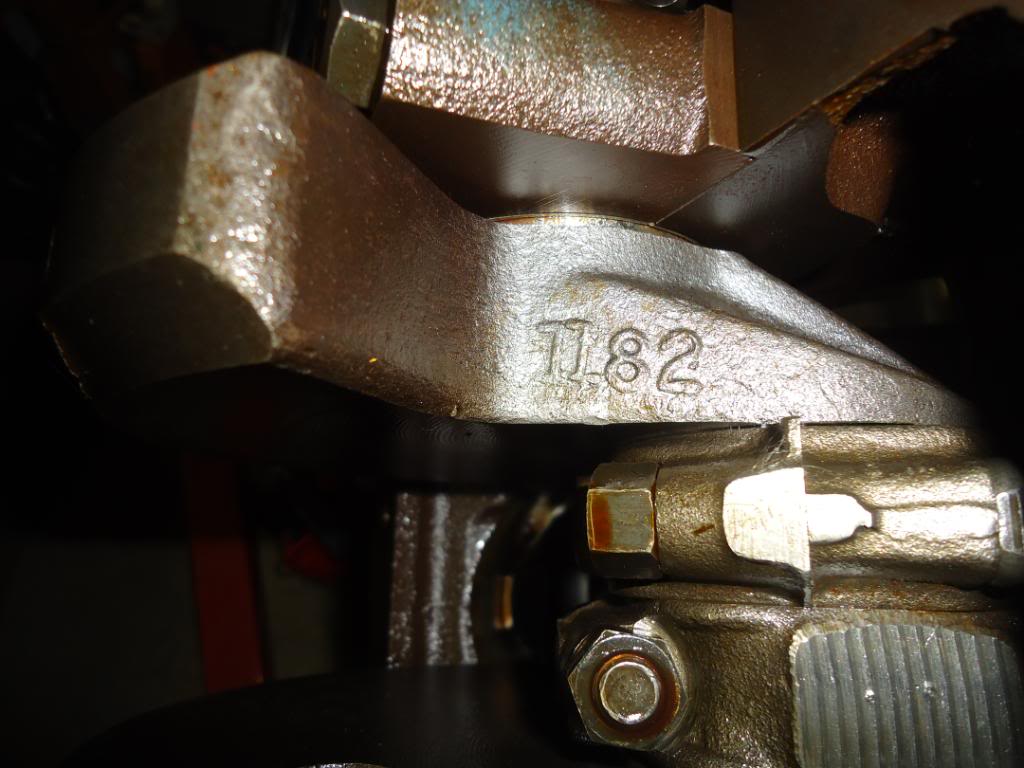
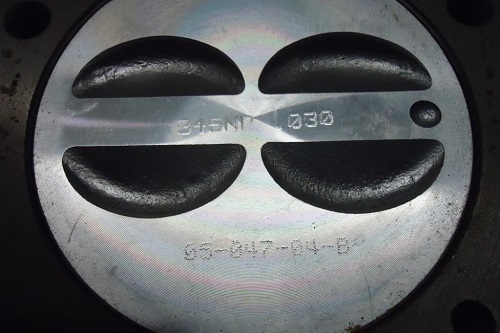
The original engine to the car was long gone. It was probably removed in the early 70's when the car was converted to a drag car. One of the preivous owners, Rick Hexemer Jr, pulled this 350 engine from a 1967 Impala and had the short block rebuilt. So I did not have to do anything to the short block, but clean it up and add a cam. The block is cast part #3892657, which would be correct for this 3rd week of June 1967 built Camaro. The cast date is April 20, 1967. A little early, but still correct.
The engine had the correct 1967 Crank #1182. It would not have been that number if it was a 327. 327's and 350's use the same block, but there is extra machining done to it to fit the #1182 cranks.
The pistons were obiously 0.030" over. I'm not sure if the crank was turned or polished.
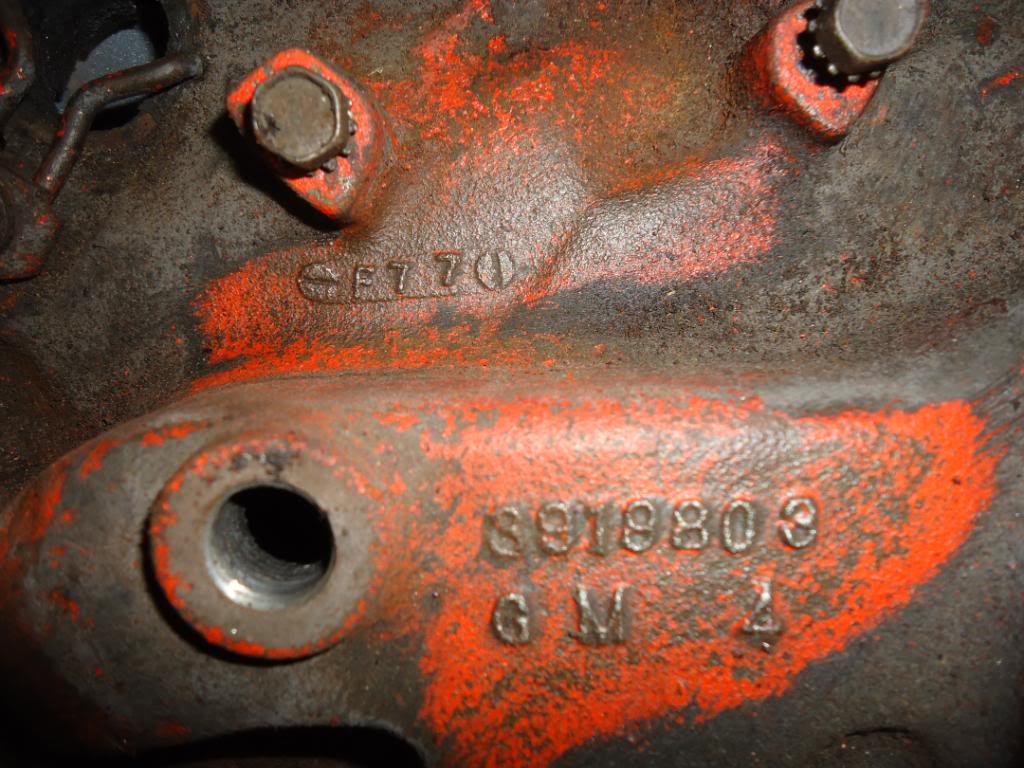
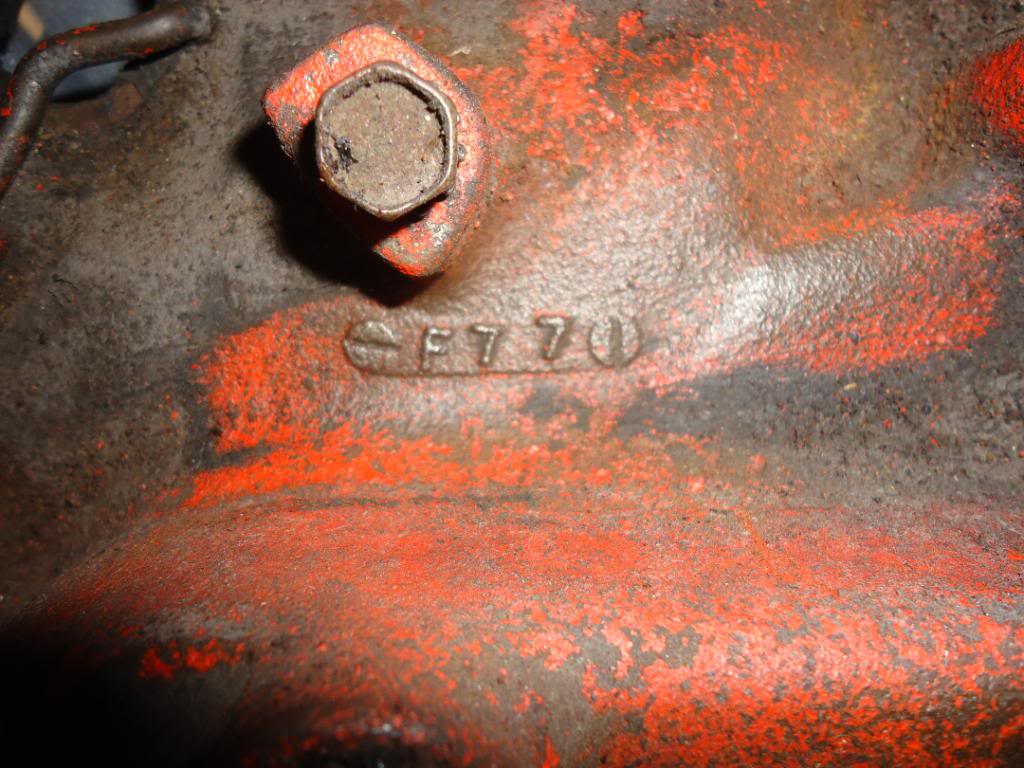
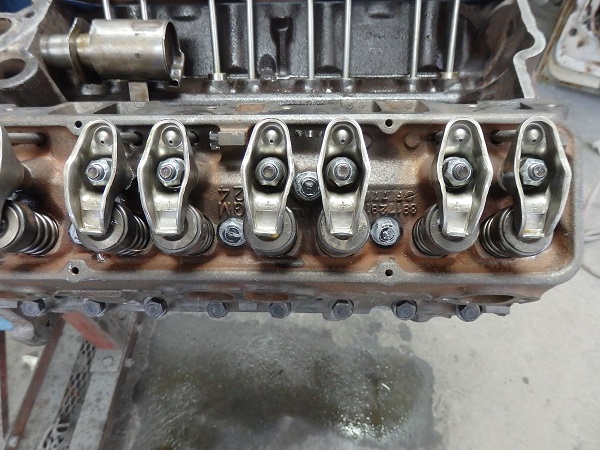
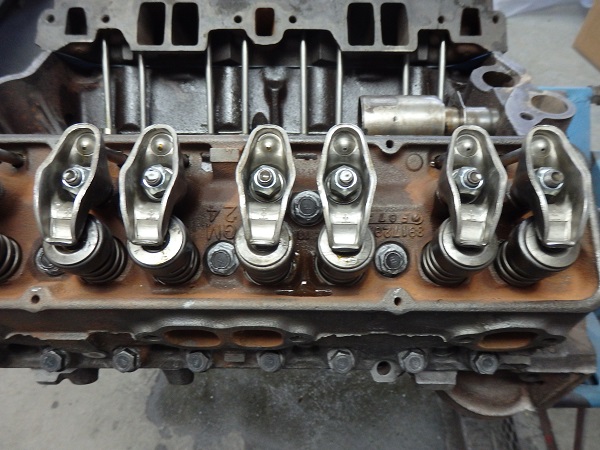
The intake that came with it, allegedly from the same Impala, is cast #3918803 and is dated June 7, 1967. The books show that intake #3918803 is a 1968 only part, but clearly is was cast before they were making 1968's. After talking to some judges, it appears that this intake appeared on many late 1967 cars. It should, it came off one.
The heads are both cast #3917291's. One is dated June 6, 1967, the other is June 7, 1967.So far everything is the correct part for the car.
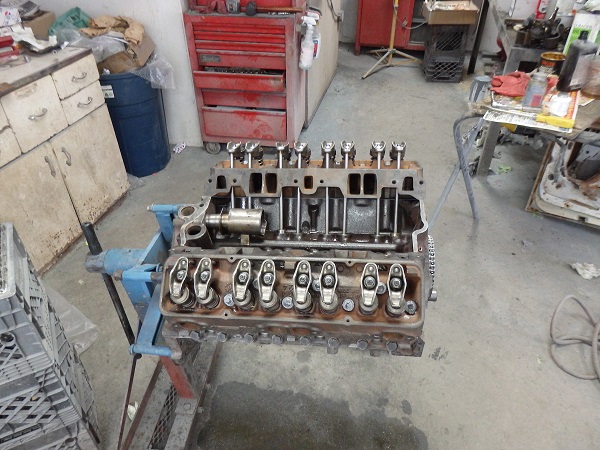
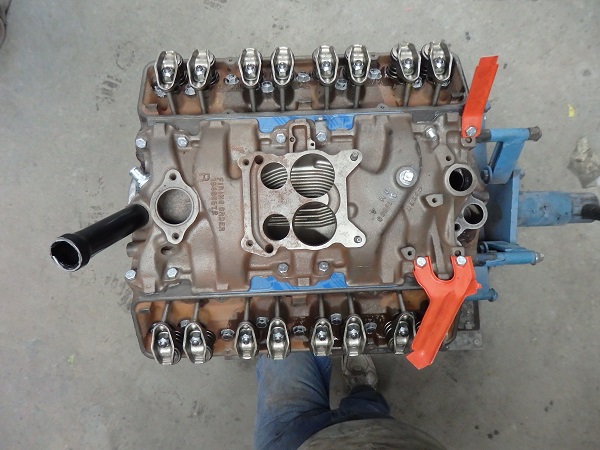
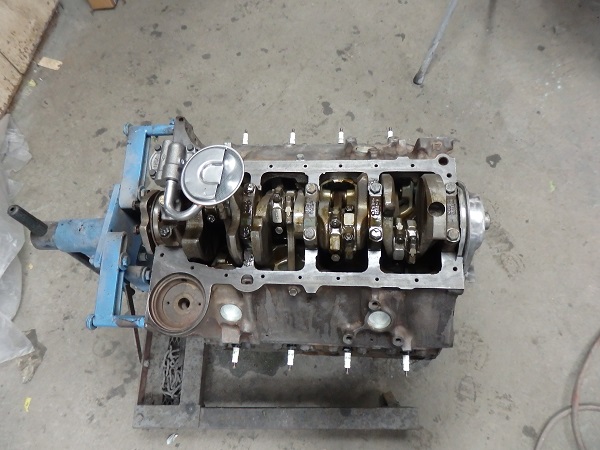
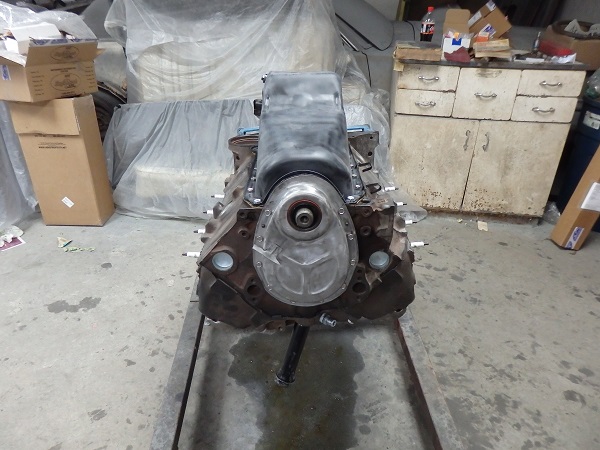
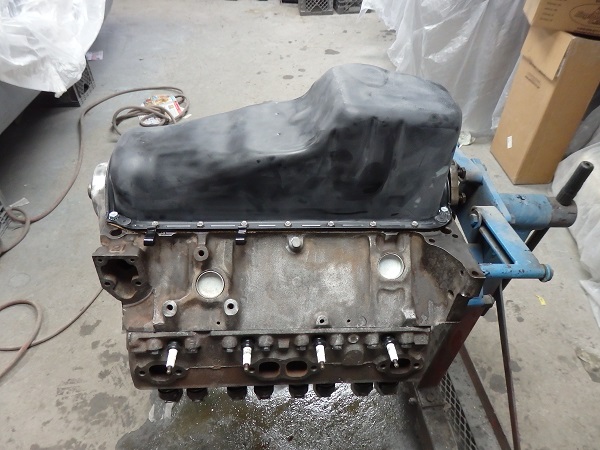
There was nothing special about putting this engine together. The plan was to use the original style oil filter and canistor instead of using a screw on adaptor.
The timing cover is worth mentioning. The 67/68 version has a timing indicator then all of the later years. I didn't take a pciture of it, but this cover had a date code stamped on it. Again this was dated June 1967.
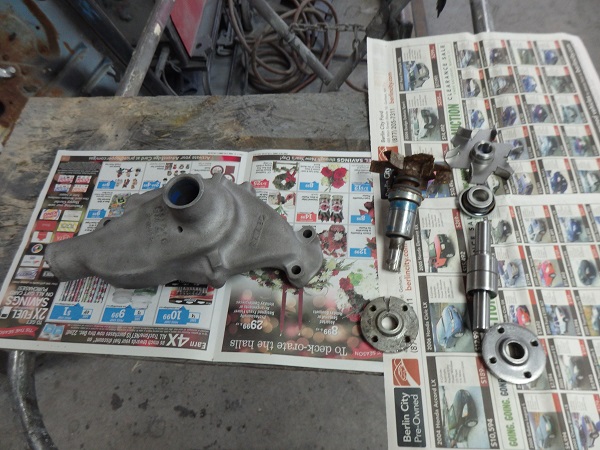
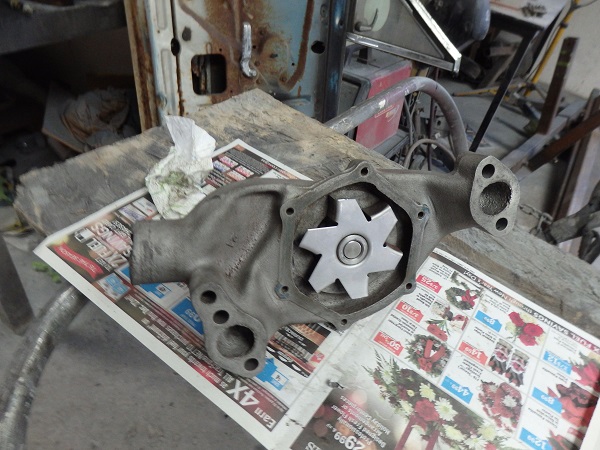
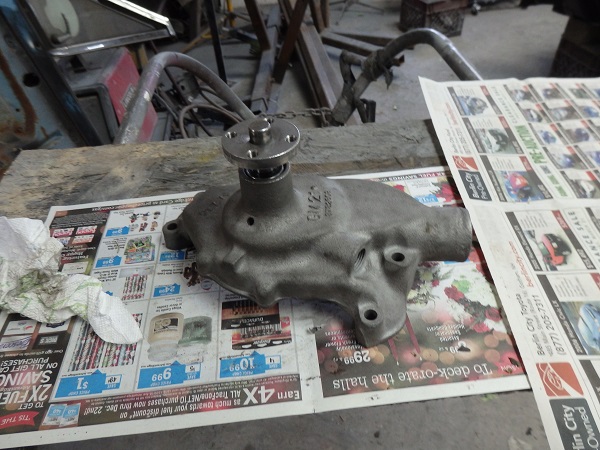
I paid too much money for a used water pump and rebuilt it with a kit I found online. I had to buy it just because it matched the intake. The pump is the correct cast #3782608 for the car and is date coded June 7, 1967.
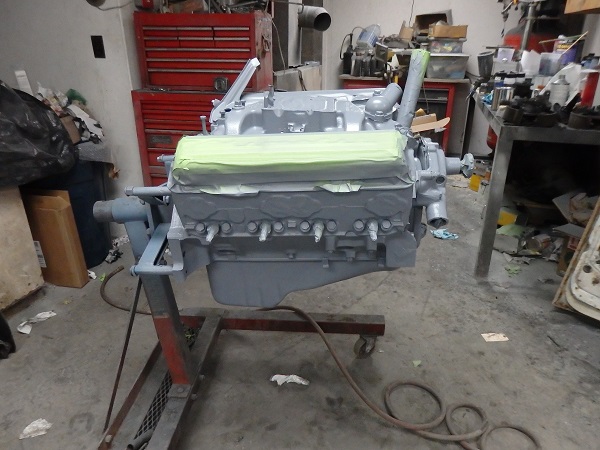
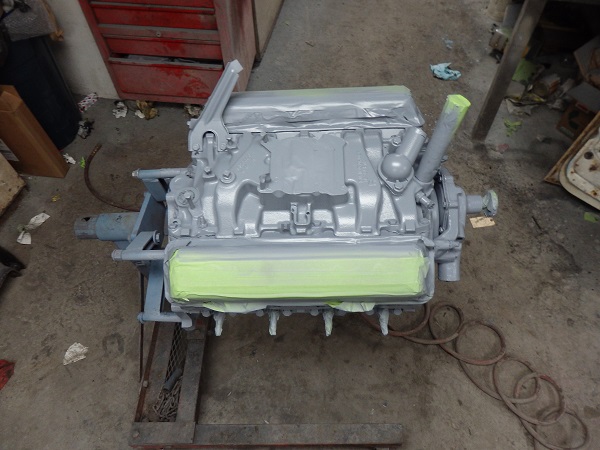
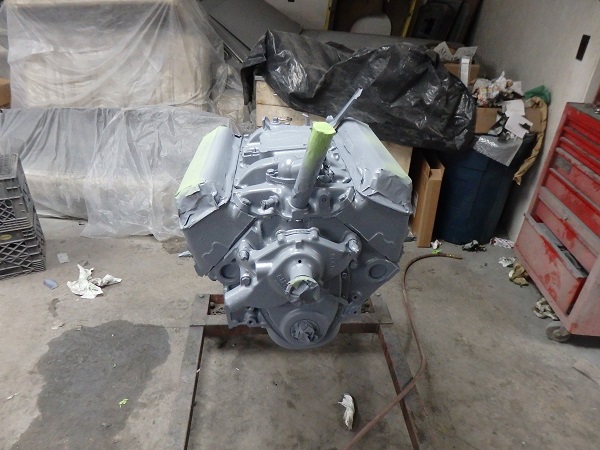
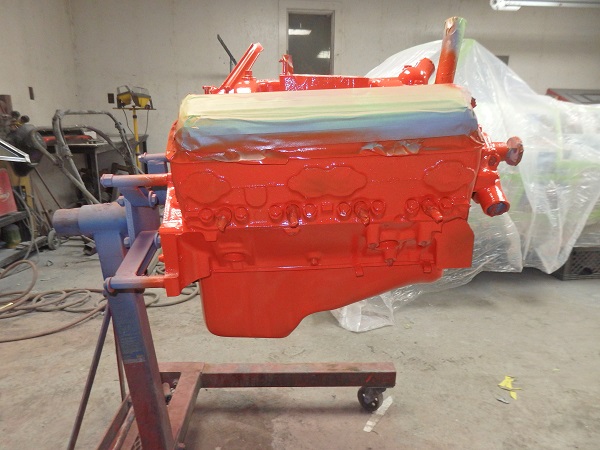
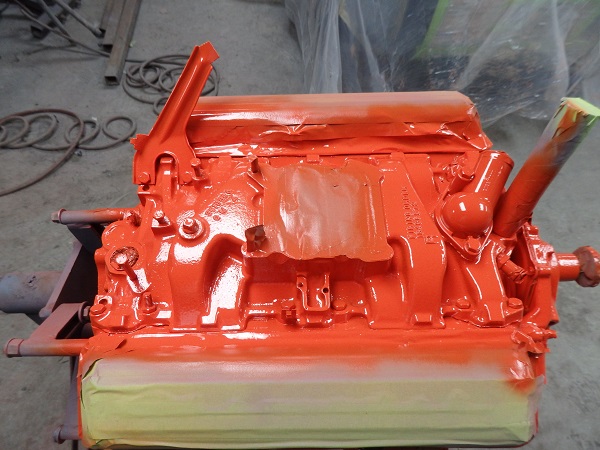
As I do with all of my engines, I coat them with PPG epoxy primer before painting them. Being a 1967 SS, this engine original came with chrome Chevrolet valve covers. I installed a pricey set of repo valve covers and painted the engine like the factory did with the covers in place and
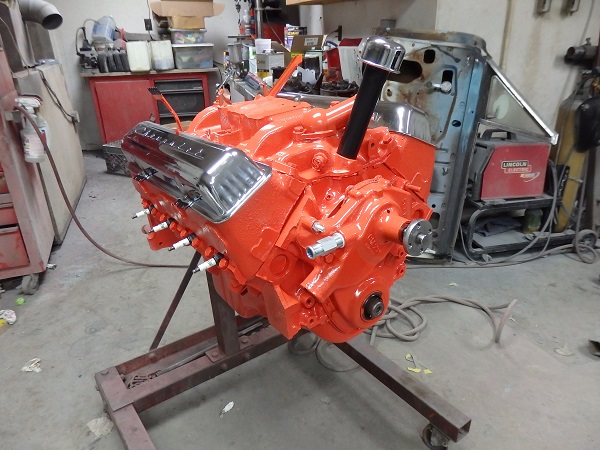

Here it is after paint. I did't have the harmonic balancer at the time, so I had to wait to put the engine in.
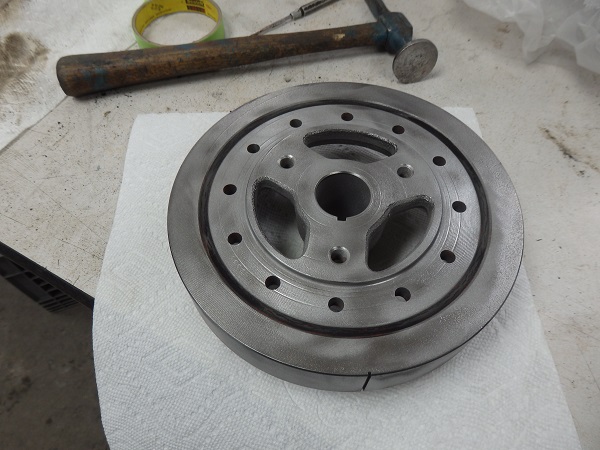
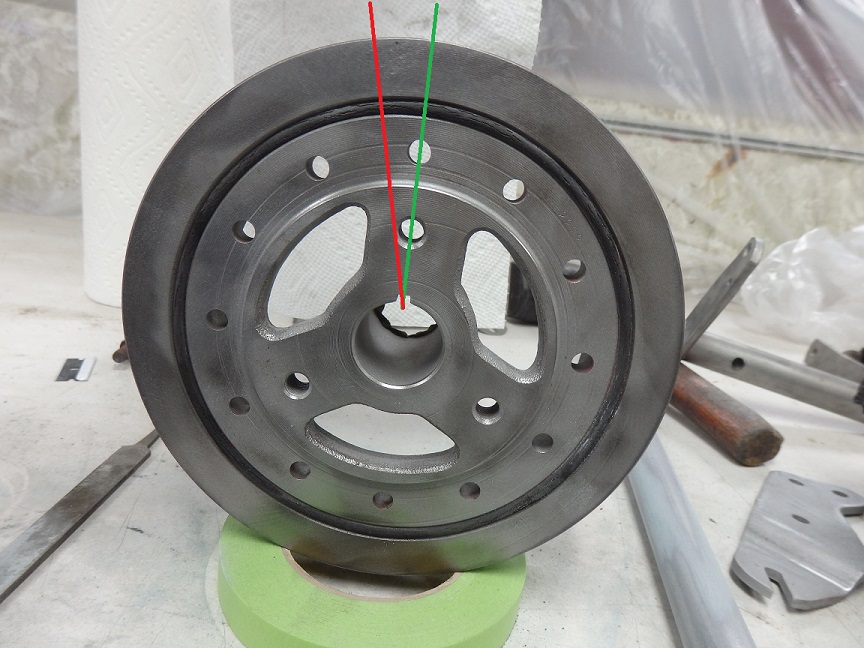
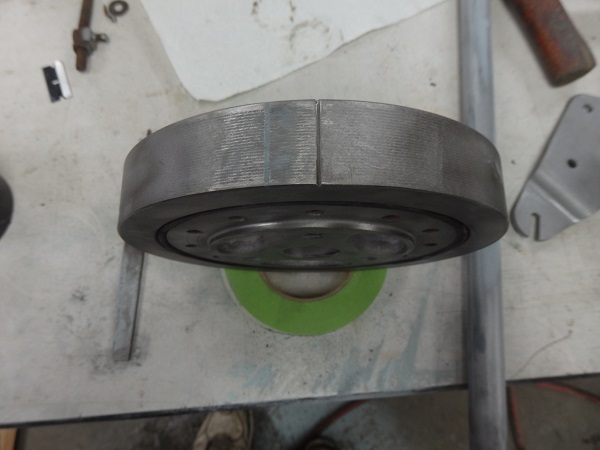
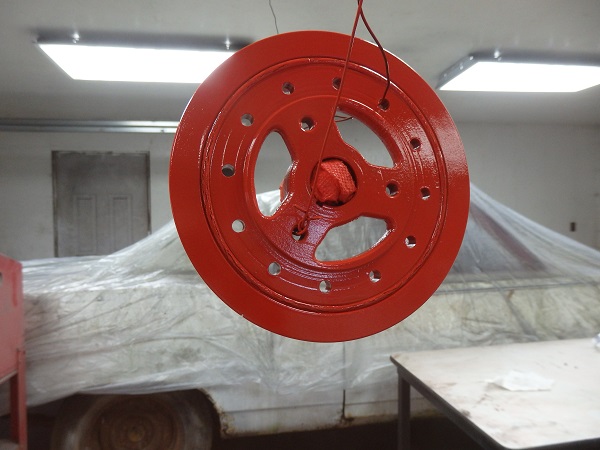
The harmonic balancer is another surprise think I had to learn about. The harmonic balancer, or dampener if you prefer, is different in 67/68 then the later years. This is because GM changed the location of the timing mark on the timing chain cover in 1969. People get this wrong all the time, which makes it difficult to find a real 67/68 version. Here's the story:
The original part number was 3896966, which was cast into the hub portion. The timing mark (notch) was originally in line with the keyway (green line in the picture). In 1969 GM changed the mark location (red line in the picture), but kept the same 3896966 hub. Then GM stamped 3-4 digits onto the outer ring that signifies the new part number of the assembly. There is just a ton of people out there that just read the 3896966 on the hub and thinkn they have a 67/68 harmonic balancer. Well they don't.
I waited so long to find the correct harmonic balancer, that I bought a 1969 version, filled the old notch and machined in the correct one. You can see that in the third picture. I painted it so you can't tell that's what was done.
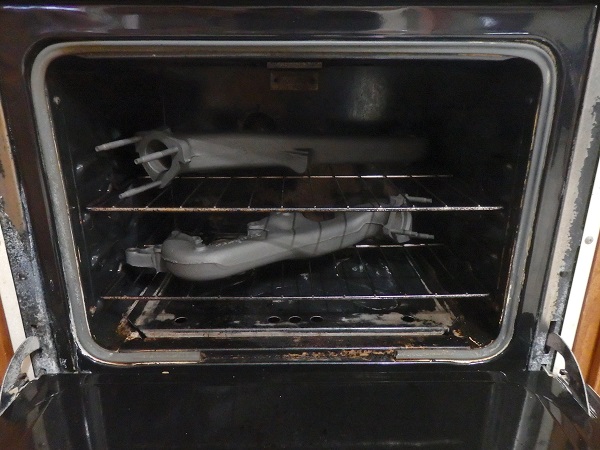
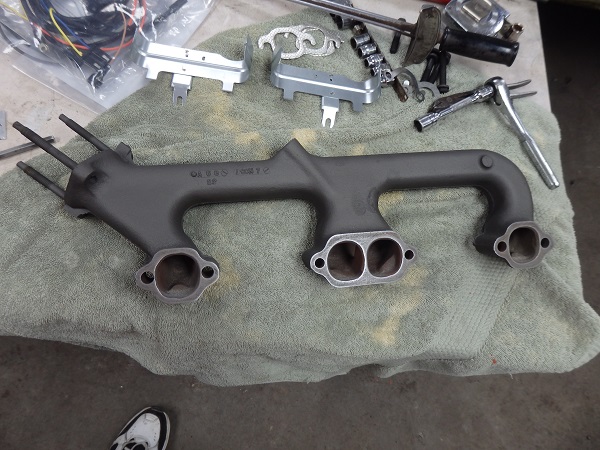

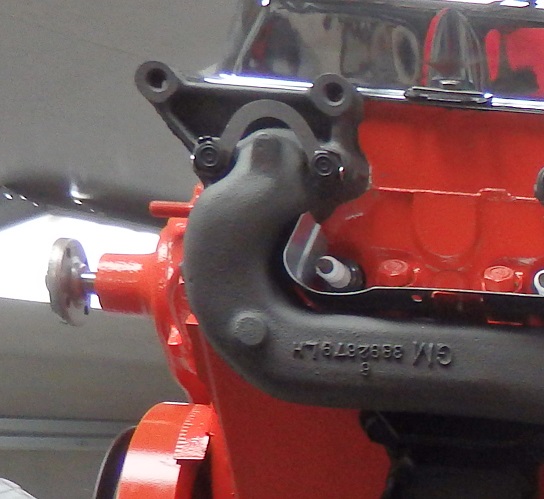
I got a beautiful pair of exhaust manifolds off ebay. They both the correct casting numbers 3840812 RH & 3892679 LH, however they had Jan 1968 cast dates. At least the cast dates are on the back side and are not visible when installed.
To restore them, I just sandblasted them, coated them with Seymours High Heat Cast Gray and curd them in an oven.
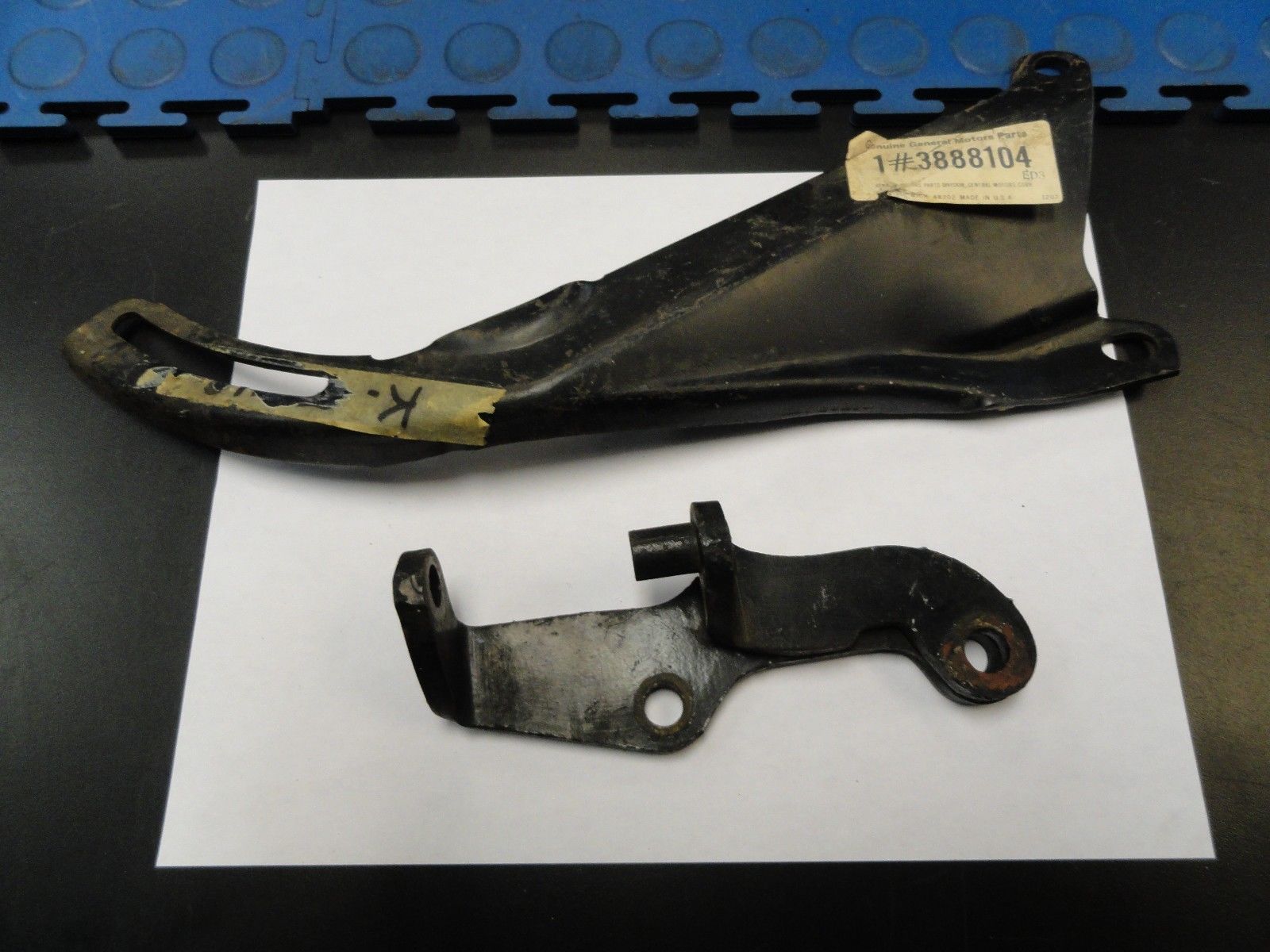
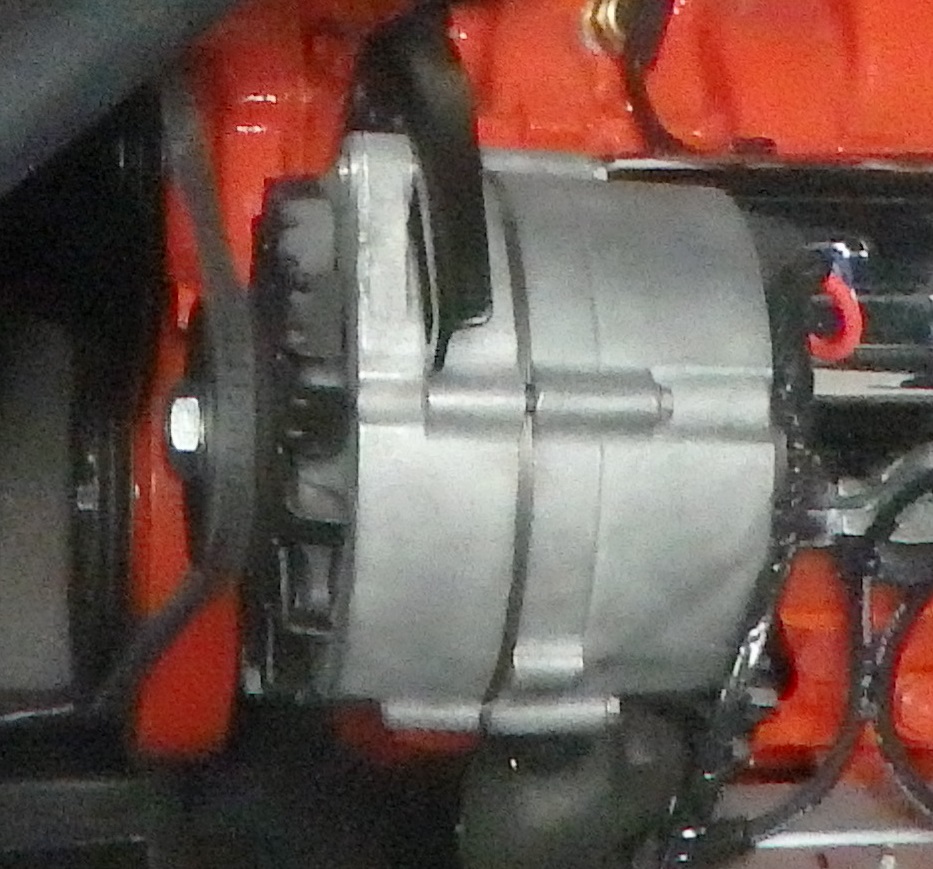
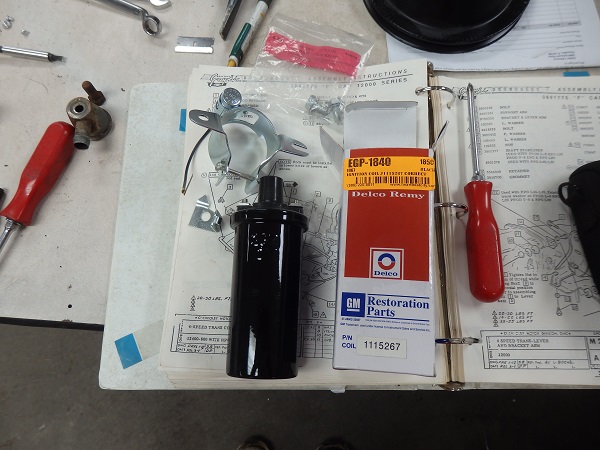
Again ebay paid off and I scored an NOS set of alternator brackets. The alternator, sorry for the bad picture, was another ebay purchase. It was a correctly restored 1100693, 37A alterator with correct phosphated single groove pulley.
The coil is a repo 1115267 with a raised "267" and "BR", which is supposed to be OE correct.
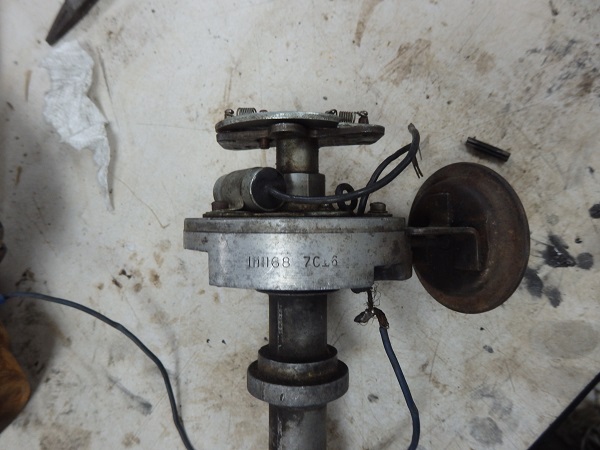
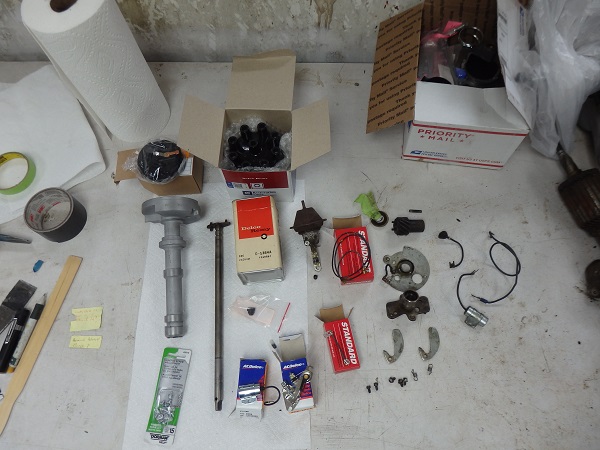
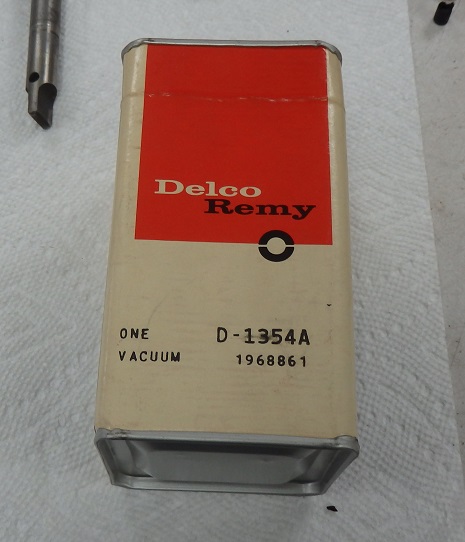
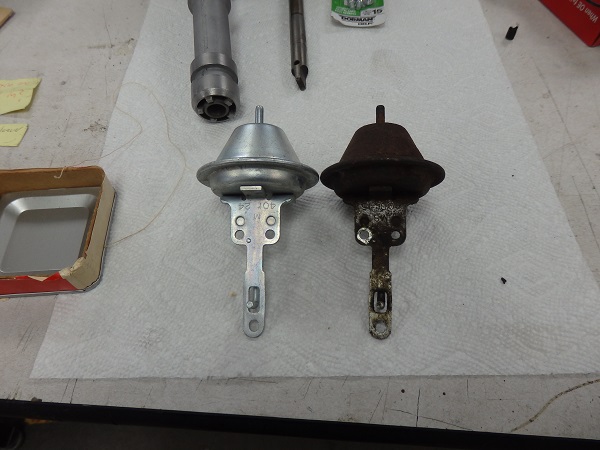
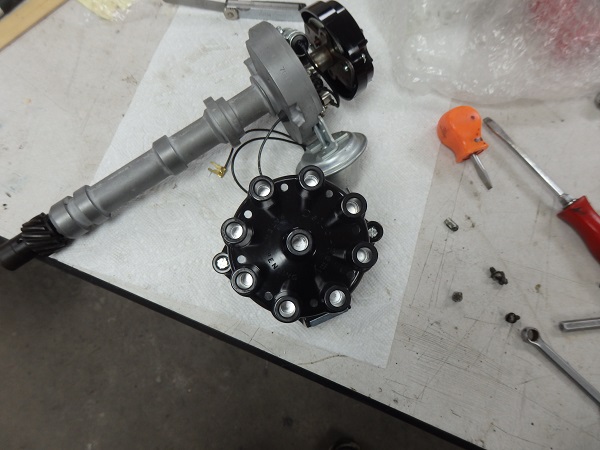
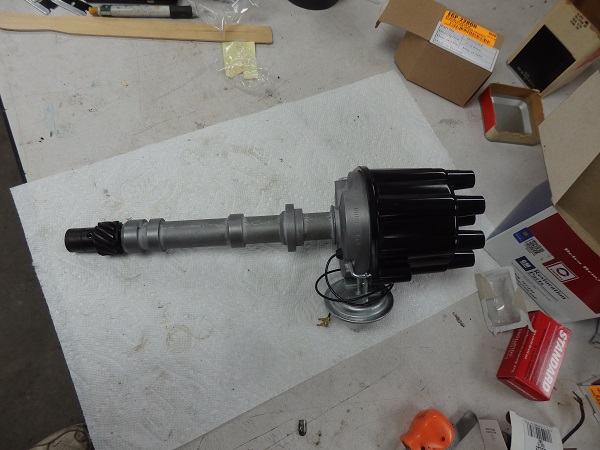
The correct 1111168 distributor was hard to find and it cost me $300 in the condition you see it in. The one I got is date coded 7C16 (March 17, 1967). Kind of early for this car, but perfect for a Pace Car Replica.
I bead blasted the housing, pressed new bushings in it and put it back together with new components.
The vacuum advance is unique for 1967 and I was able to locate an NOS service part D1354A.
The distribor cap is a correct repo with Delco_remy, Patent Pending lettering on it.

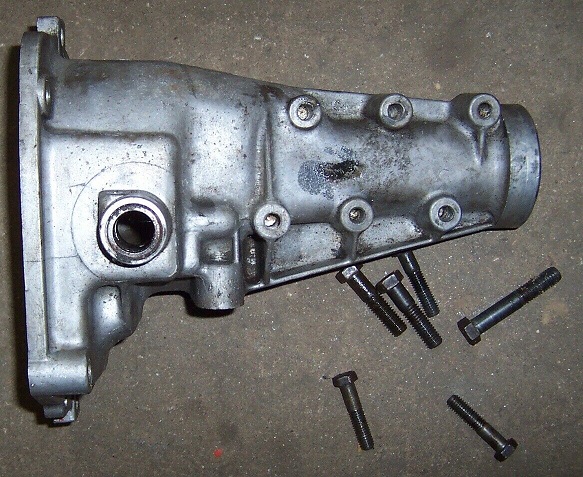
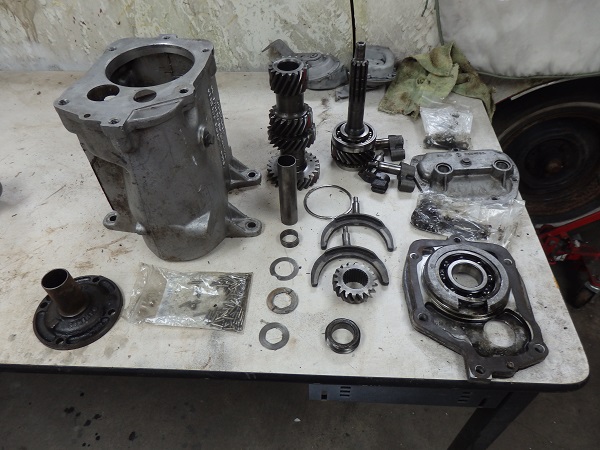
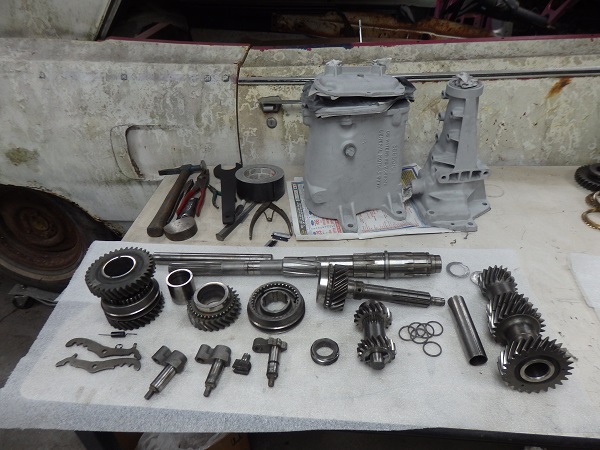
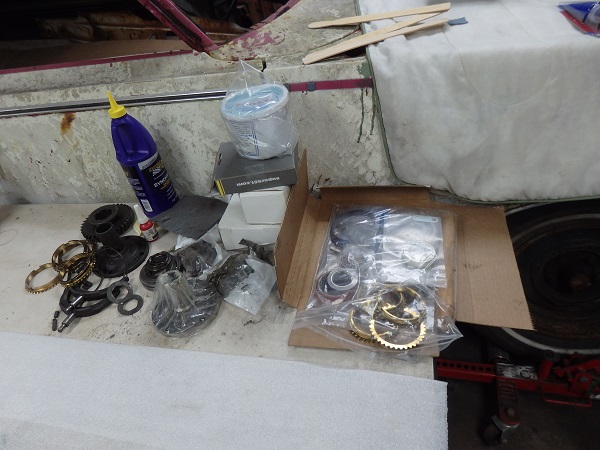
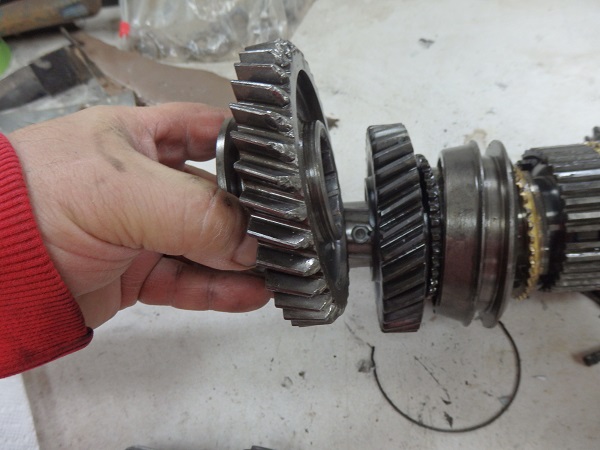
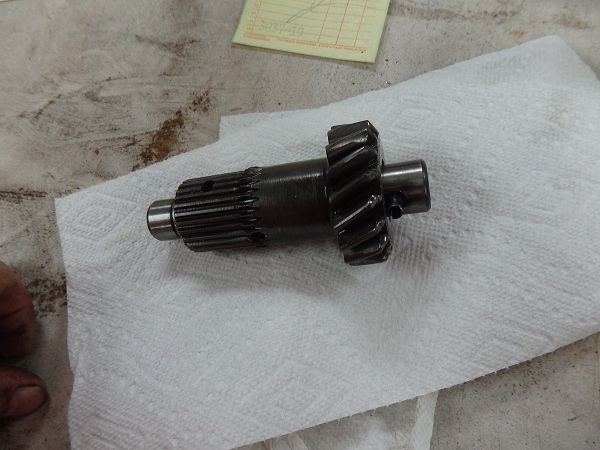
The car was originally built with a Muncie 4-speed. It took some time to find the correct one. When I found it, it was listed on ebay fully dismantled and the seller was selling it off in pieces in multiple auctions. I put big bids on everything, but didn't win the tail housing. I had to find another one, which I did. The reason why it was sold this way, was that the input shaft bearing blew apart and since the seller had it apart it was easier to sell it in pieces and certainly easier for him to ship.
I was date P7D21 (April 21, 1967), which is inline with what the car would have come with. Upon inspection of the damage, I found that the idler and reverse gear were bad along with the input shaft bearing and the input shaft cover. No big deal right ?
Before tackling the rebuild I bought the book "Muncie 4-Speed Transmissions: How to Rebuild and Modify" by Paul Cangialosi. Along with the book Paul Has a whole series of YouTube videos on rebuilding Muncies. He even sells customized rebuild kits on his website .I had no problem rebuilding the transmission after digesting of that. I highly recommend that you review Paul's videos and get your kit from him. I don't think there is a better source out there. He certainly did things right.
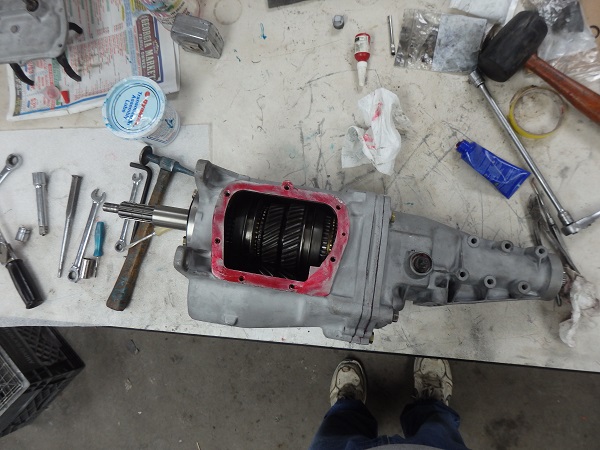
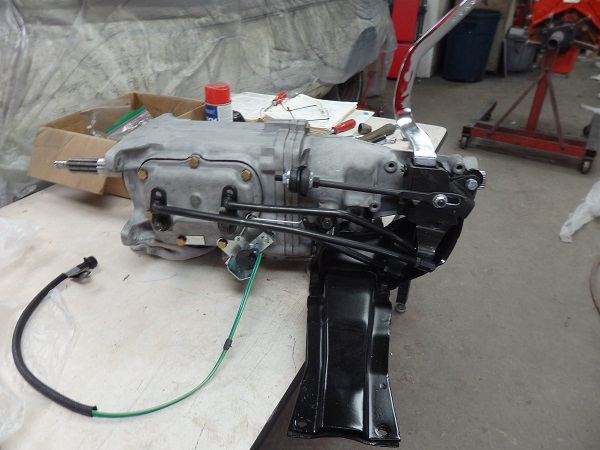
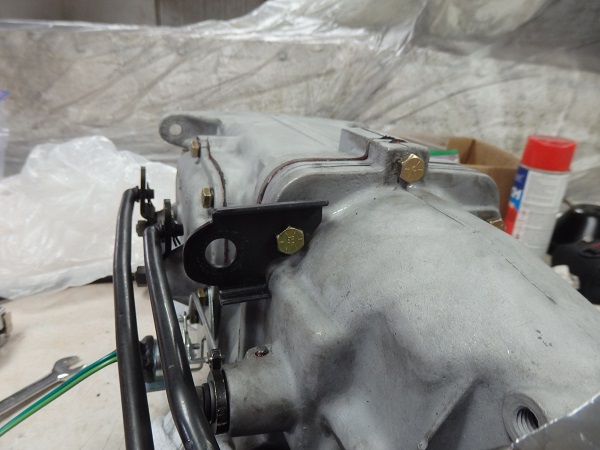
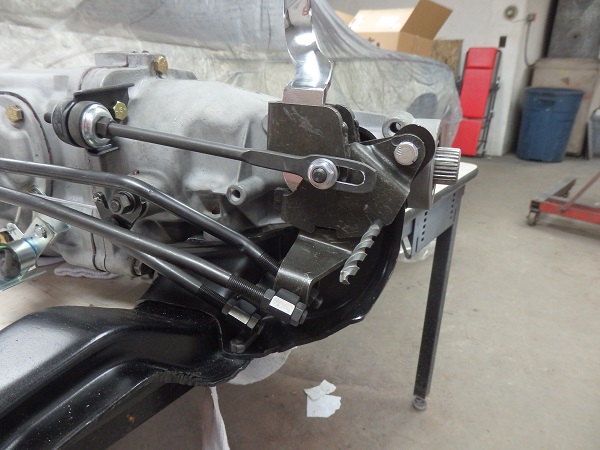
The reproduction Muncie shifters are extremely close to the original version, so that is what I decided to get. I mounted to the transmission before putting it in the car so that I didn't have to adjust it while crawling under the car.
The Muncie shifters use a stabilizer bar. The stabilizer bar and mounting bracket have a unique version for 1967. I searched for a long time and never found any. I ended up buying some repo parts, I think the a 1967 Chevelle that were close.
There is a special tool for aligning the shifter rods, that is mentioned in the shop manual. You can actaully use a drill bit to align the gates. Once the alignment was done, I removed the shifter since it needs to be removed to install the engine and transmision as a unit.
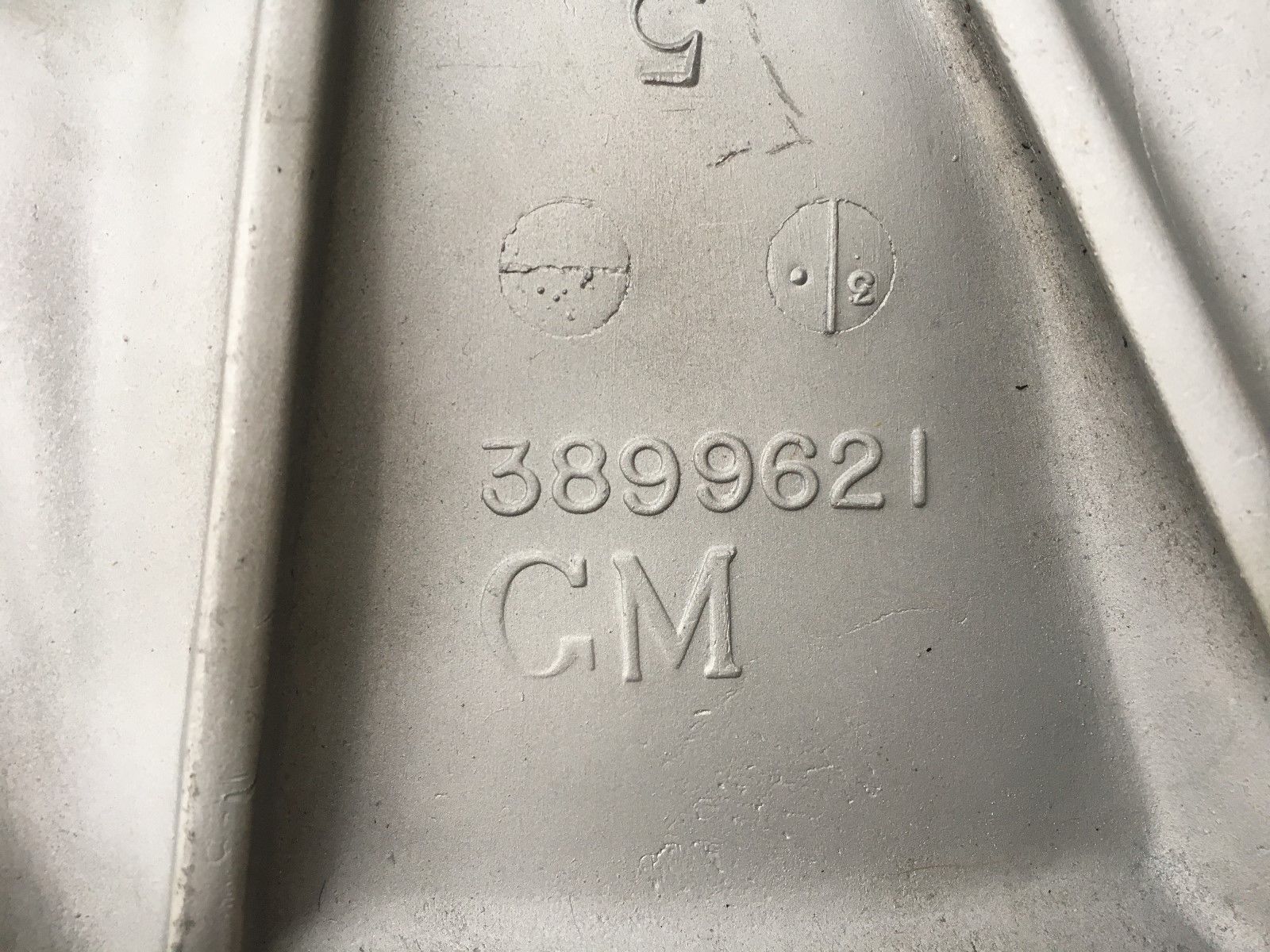
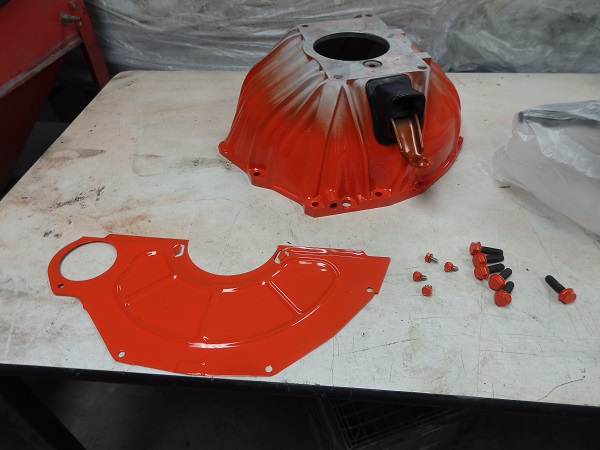
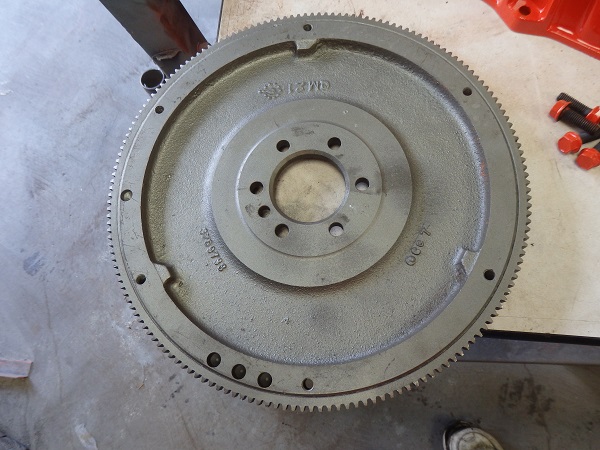
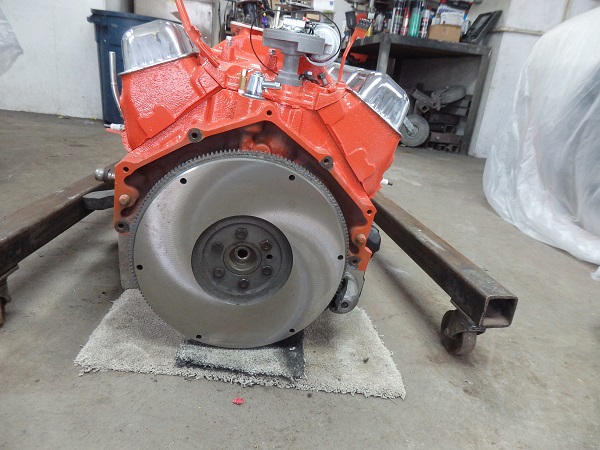
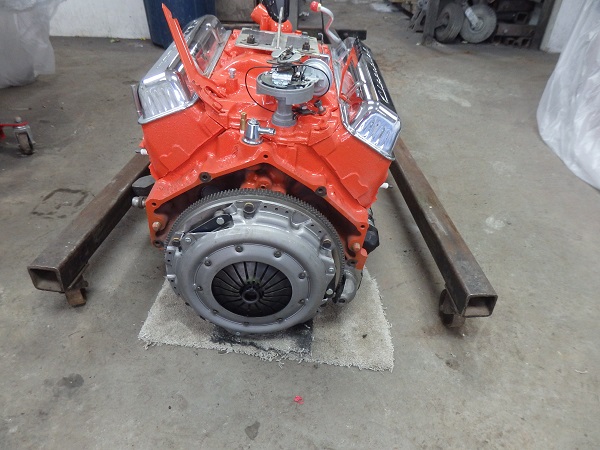
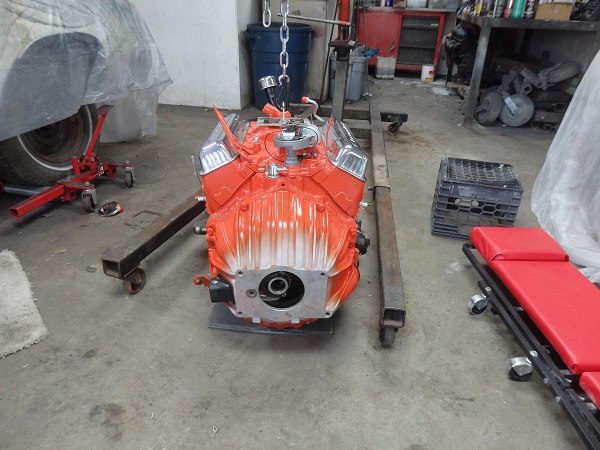
The correct bellhousing is 3899621, which is used for the high performance cars with an 11" clutch. This includes the SS350. The engine was painted at the factory with the bellhousing and clutch fork installed, but not the clutch fork boot. The bellhousing and clutch fork where not fully painted. They just received a bunch of overspray on them. I reproduce the original look, but painted the parts separately.
I got lucky again and found the correct 11" flywheel (part number 3789733) on ebay for $100. It was even already surfaced, which would have cost me $100 to get done. This one was cast dated March 3, 1967.
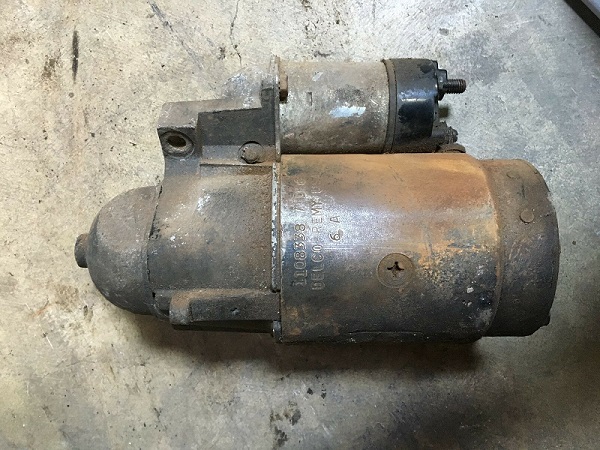
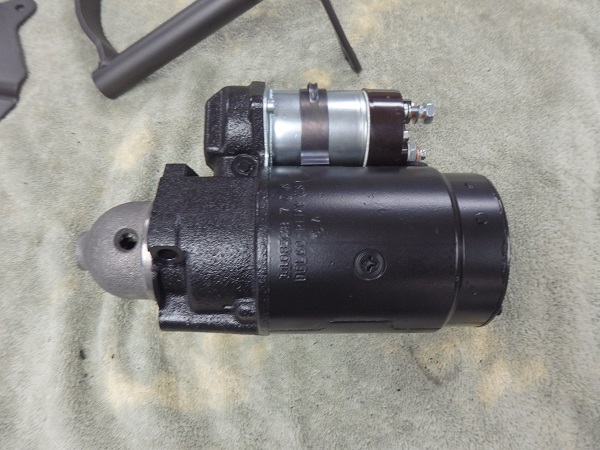

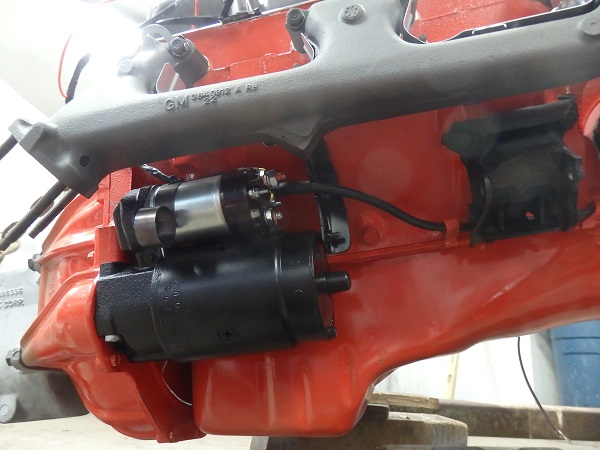
The correct starter for the car is a 1108338, 6 amp. All I good find was one with a good build date of April 6, 1967, but it had the wrong snout. You can tell that the snout is wrong as the high performance cars had 2 long bolts to mount the starter, while the others had 1 long bolt and 1 short bolts. They make a very nice repo snout, which looks like the original, but is missing the part number.
Starters are shimmed to set the correct amount of clearance with the flywheel. The starter rebuild kit came with a rod to measure the clearance.
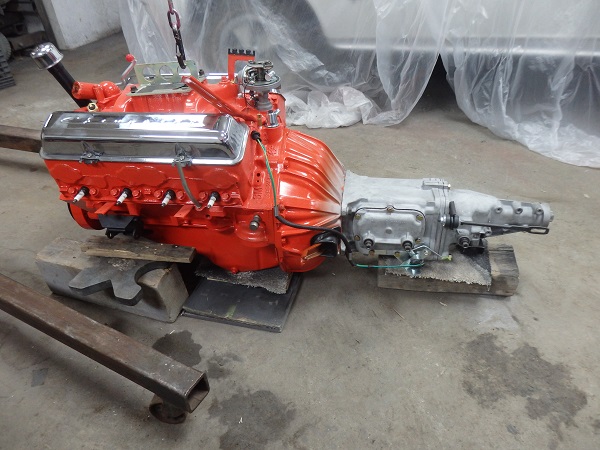
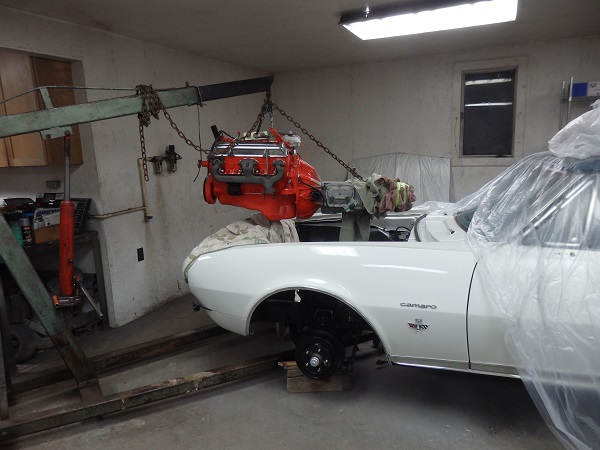

Installing the engine by myself was pretty tricky. The engine needs to be held level to position it over the engine bay. Then it needs to be tipped in the rear so that the transmission can be dipped up under the transmission tunnel as the engine is lowered and gradually move back.
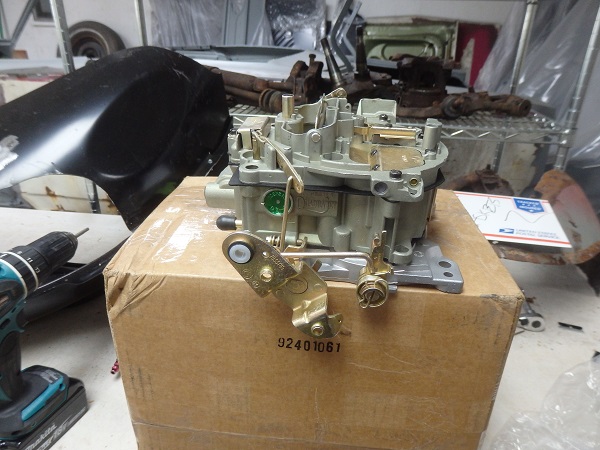
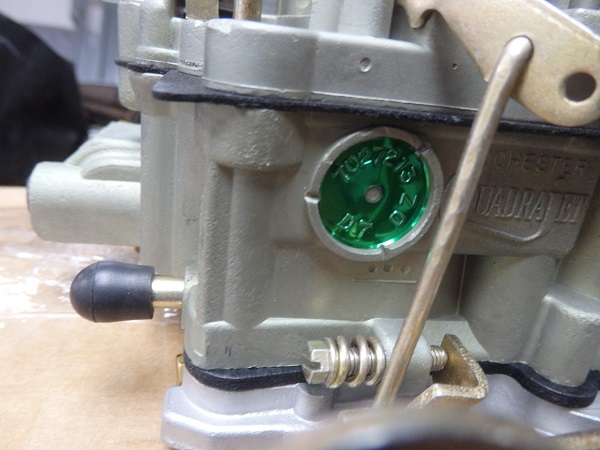
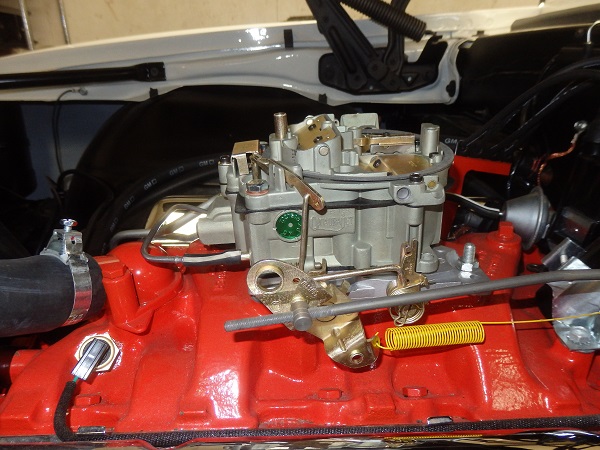
The correct carburator for the car (a 1967 SS350 w/4-spd, late-67 built) is a Rochester Quadrajet part number 7027213 DZ. This was a very hard to find item. The best I could do was have Custom Rebuilt Carburators restore one for me and make it into the correct carb one using correct components and adding a new repo tag 7027213 DZ, dated D7 (april 1967), which was a close to the correct date that I could get. It cost me $825.
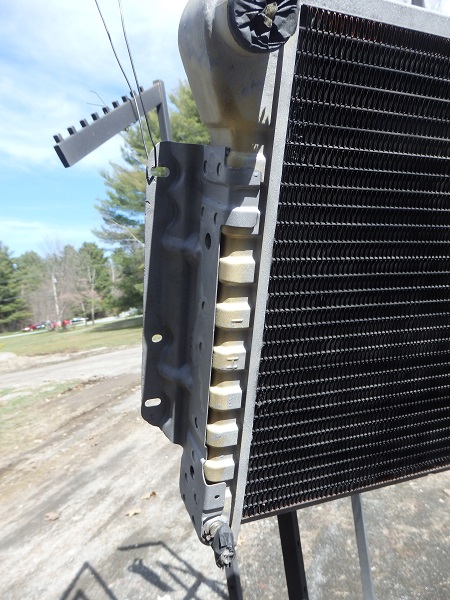
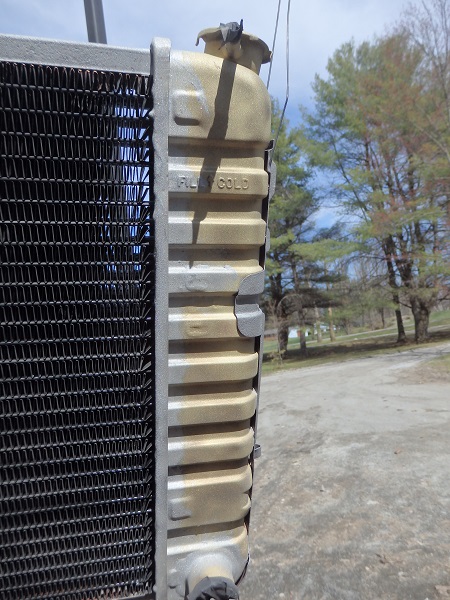
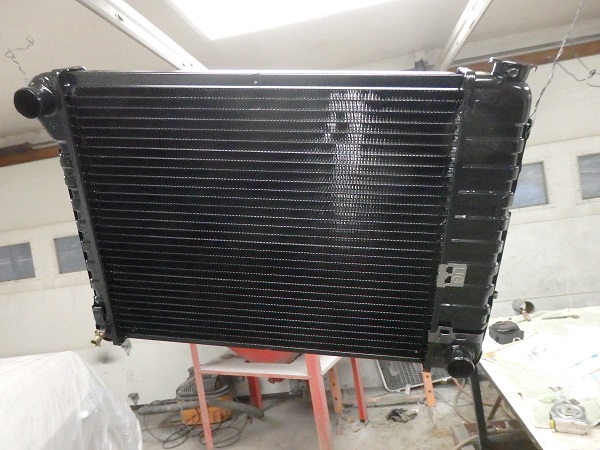
Another difficult thing to find was the correct radiator. Heartbeat City reproduces them, but they were out of stock and they were in the middle of changing bracket suppliers. I eventually found this high-priced one on ebay for $800. It had the correct original IH & OD Harrison stamped side tanks, but was recored. As usual the paint was teribble and I had to redo it. Then all I had to do was add the repo UG ID tag and shroud mounting brackets before I mounted it to the car.
One very important thing to note is that original radiators for manual transmissions have a smaller bottom inlet port (1-1/2") at the bottom than the ones for the automatics (1-3/4"). They do not produce manual transmission radiators and therefore they also do not reproduce the correct lower hose for original radiators on manual transmission cars. The repo lower hoses only fit automatics, which are larger ID. You can order the repo lower ones that they say are correct for manual transmission cars, but the only thing correct about them is the part number printed on them. They don't fit original cars. My only choice, as I could not find an NOS one, was buy a Dayco #70557 from Rock Auto and cut it to length.
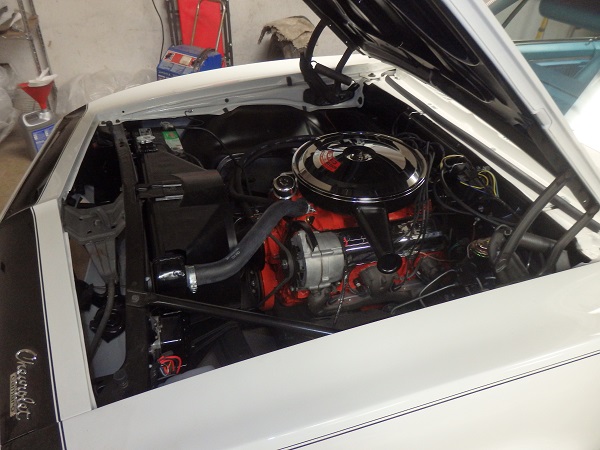

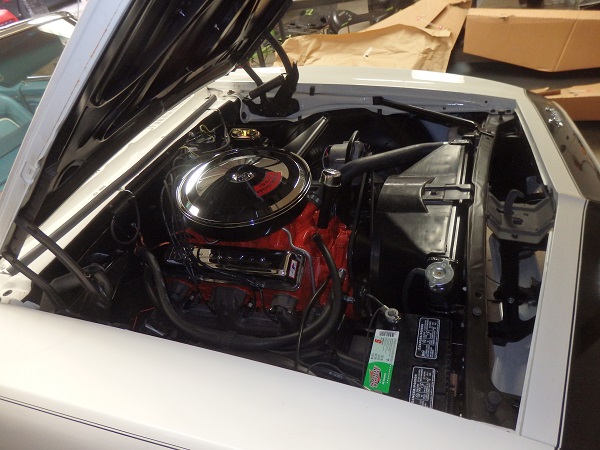
The last thing to finish off the engine bay was to add a the correct chrome breather (as correct as repo could get me) and to add the Flint valve cover decal.